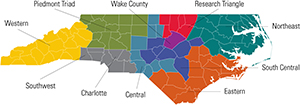Over the past three years, I have had the opportunity to work with numerous innovation teams on dozens of projects at several different organizations. At Industry Expansion Solutions (IES), we help companies implement a new process and culture we call Innovation Engineering. It is outside the scope of this blog to explain how Innovation Engineering works, but I’m happy to address that individually if interested readers will contact me.
While all the innovation teams that I have coached have had very different projects, I have noticed several common misconceptions about innovations and innovation processes. I have noticed several myths that I plan to cover in a series of five (5) blogs over the next several weeks. With apologies up-front for lack of creativity, I will call these “Kevin’ 5-myth’s to creating innovation”.
Myth 3. VOC is best place to get ideas for new innovations
Many firms that I speak with use Voice-of-the-Customer (VOC) as their primary (and sometimes only!) means to get ideas for new innovations. While VOC has many uses during the innovation process—especially around prototype or concept testing—it can be very limiting in its role for stimulating ideas for creating great innovations.
Probably the greatest demonstration of VOC’s limitation is Henry Ford’s famous quote, “If I had asked my customers what they wanted, they would have said a faster horse.” I have a university colleague who has a similar quote that says “buyers are liars.” Perhaps her quote is very similar to Henry Ford’s quote, but the point she makes is customer will often say one thing, yet behave in a very different way. Or another way of saying it is Behavior-of-the-Customer (BOC) trumps VOC every time.
Another VOC limitation is how frequently customers may have ideas or your ability to harvest those ideas. I had one CEO tell me (paraphrasing) “When customers come through the door with ideas, we are very good at getting the project and we typically make good margins on those projects, but I cannot control how fast customers come through the door. Thus, I’ve got to have methods beyond VOC if I’m going to grow our business.”
Yet another limitation of VOC is that the customers’ ideas for innovation are often just ideas for the next product upgrade of your current product. (In Innovation Engineering, we call those—Core Innovations.) It has been my experience that breakthrough innovations (we call those Leap Innovations) seldom happen from VOC sources.
It is true there are several examples of super innovations that originated from VOC. So, VOC is not to be discarded, but its limitations in creating great innovations should be recognized. Perhaps challenge yourself and your organization to “think outside the VOC-box” as you look for ideas to create great innovations in 2016!
Myth 1. If you have a meaningfully unique innovation 100% of customers will buy it (Dec-2015)
Myth 2. Innovation is only about new products (Jan 2016)
 Kevin Grayson is Director of Business Growth and Innovation Services at NC State Industry Expansion Solutions. He provides strategic consulting, including business plan and sales development strategy, market penetration, market growth, new product introduction, innovation strategies and product design to clients in multiple industries.
Kevin Grayson is Director of Business Growth and Innovation Services at NC State Industry Expansion Solutions. He provides strategic consulting, including business plan and sales development strategy, market penetration, market growth, new product introduction, innovation strategies and product design to clients in multiple industries.


